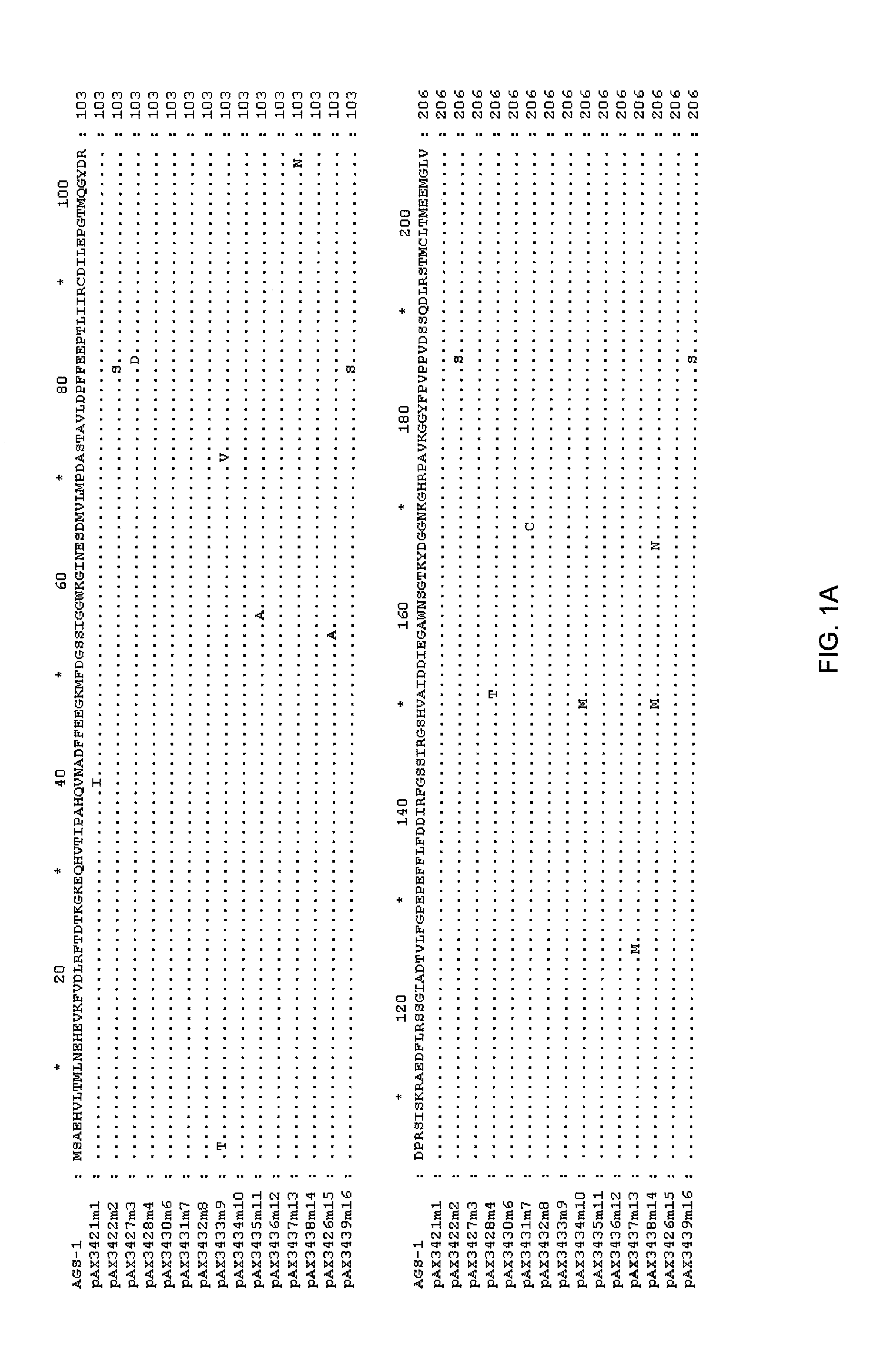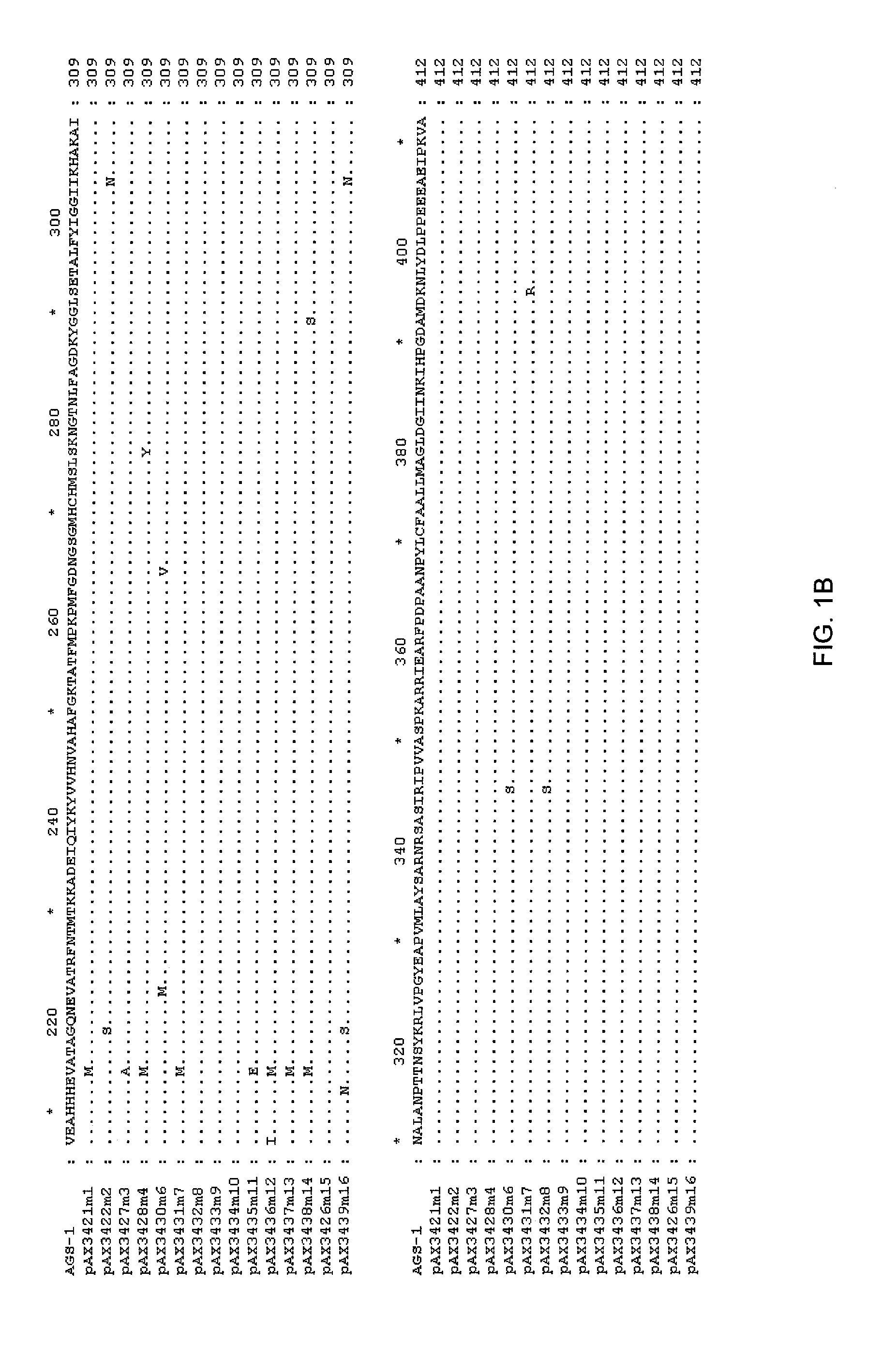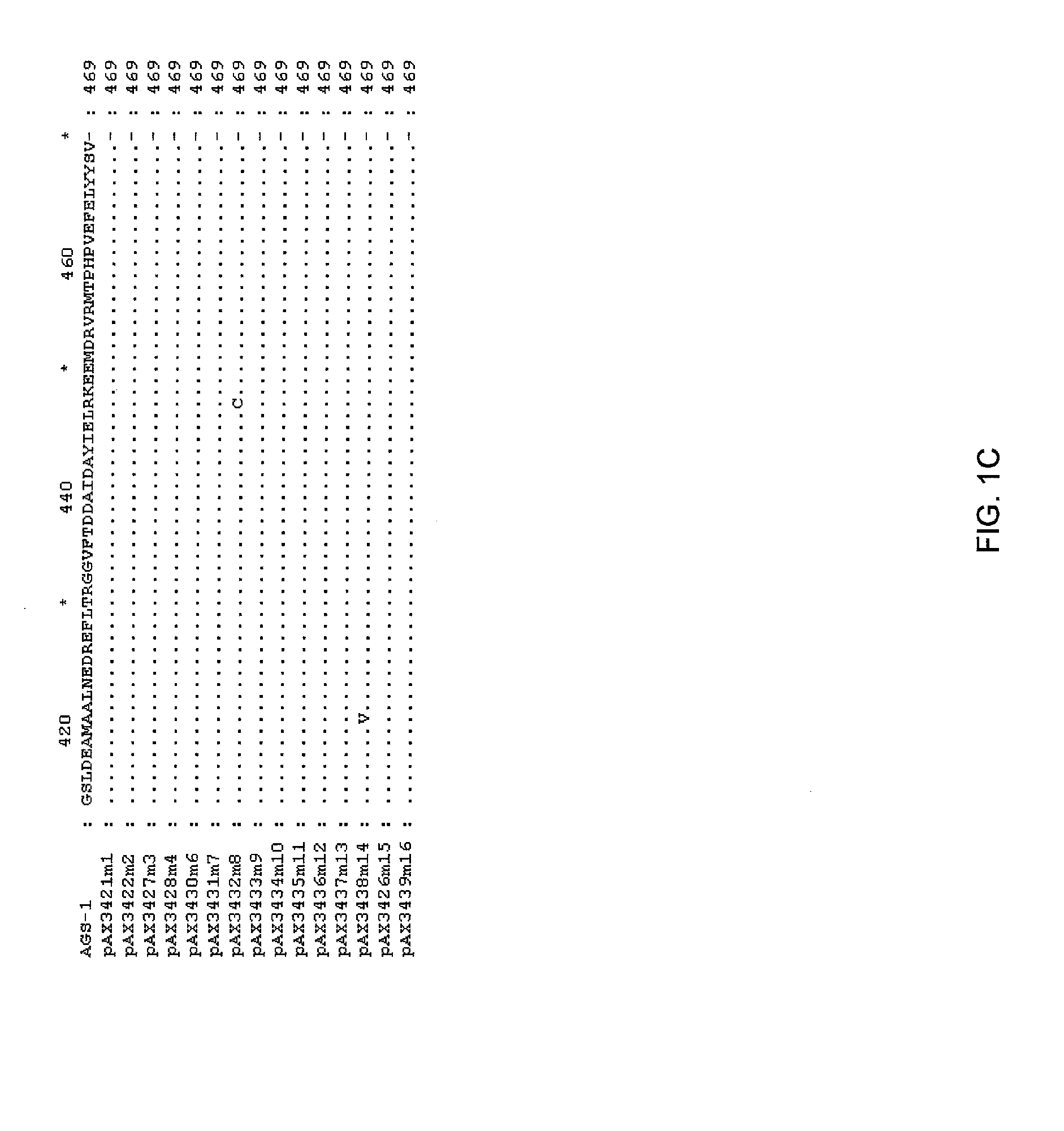Bacterial glutamine synthetases and methods of use
a glutamine and enzyme technology, applied in the field of plant molecular biology, can solve the problems of limiting the use of such compounds as glufosinate, and achieve the effect of improving nitrogen utilization and enhancing yield in the plan
- Summary
- Abstract
- Description
- Claims
- Application Information
AI Technical Summary
Benefits of technology
Problems solved by technology
Method used
Image
Examples
example 1
[0106]A glufosinate resistant bacterial strain (ATX 20345) was isolated from a soil sample via a soil suspension by placing approximately 0.01 grams soil in 500 μl sterile water. The soil suspension was vortexed, and 20 μl was used to inoculate a 2.5 ml minimal medium culture supplemented with 5 mM glufosinate (Riedel-de Haën, available through Sigma-Aldrich, St. Louis, Mo.). The minimal medium contains the following ingredients (per 1 liter): 10 grams sucrose, 1 ml 0.8M MgSO4, 1 ml 0.1M CaCl2, 1 ml trace elements, 2.38 grams KH2PO4, 5.64 grams K2HPO4. The pH is adjusted to 7.0, and the solution is sterilized with a 0.2 μm filter. Trace elements consist of (per 100 ml) 0.1 g FeSO4.7H2O, 0.5 mg CuSO4.5H2O, 1.0 mg H3BO3, 1.0 mg MnSO4.5H2O, 7.0 mg ZnSO4.7H2O, 1.0 mg MoO3, 4.0 g KCl. No additional nitrogen source was provided in the medium. Cultures were grown at 21° C. on a rotary shaker for 3 days then transferred to fresh minimal medium containing 5 mM glu...
example 2
Cloning of a Glutamine Synthase from ATX 20345
[0108]To obtain the gene(s) responsible for the strain's resistance to glufosinate, a small insert plasmid genomic library was prepared from strain ATX 20345. Genomic DNA was extracted from a fresh, overnight LB culture using SDS, proteinase K cell lysis followed by CTAB / NaCl, phenol-chloroform extractions. Partial digests were performed on the genomic DNA using 0.1 units Sau3A I at 37° C. for 30 minutes followed by the addition of EDTA and incubation at 65° C. for 20 minutes to halt the reaction. Resultant DNA was approximately 4-12 kb in size. The DNA was gel purified, treated with T4 polynucleotide kinase, then ligated into BamH I digested pUC18 vector. Ligations were transformed into DH5α and plated directly on M63 minimal media plates containing 20 mM glufosinate, 100 μg / ml carbenicillin, and 0.1 mM IPTG. After several days, 4 colonies had appeared, tentatively named TKH1-4. They were grown up and plasmid DNA was isolated and analyz...
example 3
Sequence of ags1 Glutamine Synthase
[0112]The DNA sequence of the TKH clone was determined (herein referred to as ags1), and an open reading frame with homology to the glutamine synthetase family was identified. This open reading frame was amplified by PCR using high fidelity polymerase, and cloned into pUC19 to yield pAX685. The encoded protein (AGS1) shows high amino acid identity with glutamine synthetases of gram negative bacteria, including E. coli (90% amino acid identity), Erwinia (94%), Pantoa (93%) and Yersinia (96%).
PUM
| Property | Measurement | Unit |
|---|---|---|
| Fraction | aaaaa | aaaaa |
| Dimensionless property | aaaaa | aaaaa |
| Dimensionless property | aaaaa | aaaaa |
Abstract
Description
Claims
Application Information
 Login to View More
Login to View More - R&D
- Intellectual Property
- Life Sciences
- Materials
- Tech Scout
- Unparalleled Data Quality
- Higher Quality Content
- 60% Fewer Hallucinations
Browse by: Latest US Patents, China's latest patents, Technical Efficacy Thesaurus, Application Domain, Technology Topic, Popular Technical Reports.
© 2025 PatSnap. All rights reserved.Legal|Privacy policy|Modern Slavery Act Transparency Statement|Sitemap|About US| Contact US: help@patsnap.com



